The Caves of La Balme are an unmissable attraction for nature enthusiasts in Isère, France. Just a 40-minute drive from Lyon, the Grottes de la Balme offer enchanting exploration routes perfect for families with children. Inside, you’ll uncover tales of smuggler hideouts, pilgrimage spots, and a thriving bat habitat, the very symbol of La Balme‑les‑Grottes.
Table of Contents
La Balme-les-Grottes: a Charming French Village Famous for Its Natural Caves
Nestled in the Isère department of southeastern France, Balme-les-Grottes is a picturesque village best known for its impressive natural caves. Originally named simply La Balme, the village later added -les-Grottes to its name to avoid confusion with other places and to highlight the importance of its iconic caves.
PLAN YOUR TRIP TO FRANCE
Stay connected with a Holafly eSIM during your trip to France and enjoy unlimited data, with fast reliable internet and no roaming charges.
Get Heymondo travel insurance to travel carefree and enjoy every moment of your adventure.
But there’s more to La Balme-les-Grottes than its subterranean wonders. The village has a lovely park with a children’s playground and picnic area. It’s perfect for a family break or a quiet lunch surrounded by nature.
Discover the Village of La Balme-les-Grottes on Foot
At the entrance to the caves, next to the local tourist office, you’ll find a leaflet with a walking itinerary through the village’s historic landmarks. The trail is a 45-minute stroll through narrow lanes and leafy paths. Following it, you’ll discover the Château de la Serve, the Church of Saint-Pierre, and the old communal washhouse.
Explore the Natural Beauty of the Saint-Roch Hills Nature Reserve
The village also sits within a protected natural area known as Espace Naturel Sensible (ENS) Les Coteaux de Saint-Roch. This nature reserve encompasses caves, meadows, and woodlands that can be explored on a two-hour hiking trail. The local tourist office also offers guided walks to learn more about the region’s unique landscape and wildlife.
Thanks to its diverse habitats, the area is a haven for nature lovers. In addition to the famous bats that dwell in the caves, the park is home to many bird species. For this reason, it’s an ideal spot for birdwatching.
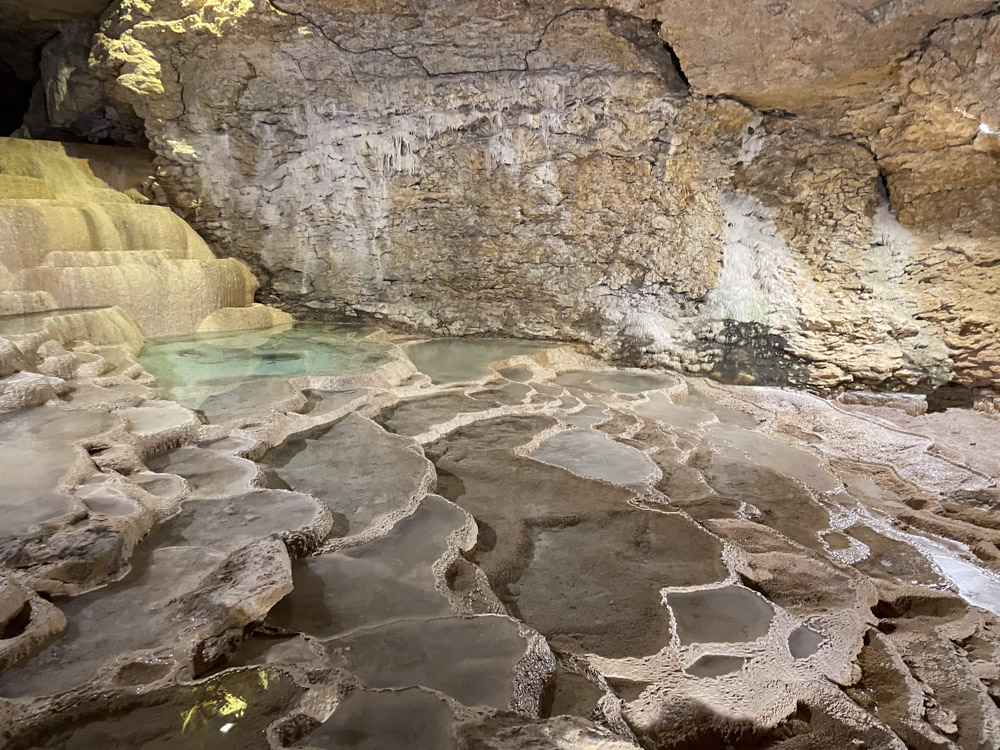
Discovering La Balme-les-Grottes: A Hidden Gem in the Heart of Bas-Dauphiné
The Caves of La Balme are located in the small village of La Balme-les-Grottes, in the historical region of Bas-Dauphiné. These natural caves are nestled among the dramatic limestone cliffs of the Isle Crémieu plateau. The plateau got its name because it appears to rise from the water like an island, bordered by the Rhône River and surrounding wetlands.
The Geological Origins of the Caves of La Balme
The formation of the caves began around 170 million years ago, when the south-east of France was submerged beneath a warm, shallow sea. Over time, layers of marl and limestone, sedimentary rocks formed from the accumulation of minerals and marine organisms, were deposited. Some of these rock layers, still visible today, are rich in fossils of ancient coral, sea urchins and shells.
The actual cave system started to take shape about 130,000 years ago, at the end of the last Ice Age. Water from the melting Alpine glaciers carved out galleries and passages, from the Grande Fontaine at the main entrance to the winding labyrinths, the underground lake gallery and the so-called bat corridor.
When the last Ice Age ended around 15,000 years ago, further erosion sculpted the riverbed that now connects the underground lake to the cave entrance, giving the system its current layout. Today, the caves are fed solely by rainwater. During heavy rainfall, the underground river can overflow into the lake gallery, filling the cave system with the sound of rushing water.
How People Have Used the Caves of La Balme Over Time
People have been visiting the Grotte de La Balme since the end of the Palaeolithic era. Over time the caves have inspired awe, myth and mystery. They have served as a prehistoric shelter, a smugglers’ hideout, a pilgrimage site and even a village dance hall.
Today, the Caves of La Balme are celebrated for their remarkable natural formations. As you wander through the cave’s rock labyrinths, you’ll encounter shimmering stalactites and beautiful terraced pools. Everything is safely accessible to visitors. Exploring the interior is an unforgettable experience suitable for everyone, including families with children.
What to See Inside the Grottes de La Balme: A Fascinating Journey Underground
Into the depths of the Caves of La Balme you’ll discover an underground world shaped by nature and steeped in history. As you follow the visitor trail, you’ll find yourself immersed in a maze of rocky passages, glittering mineral formations, and age-old legends. Whether you’re drawn by geology, folklore, or sheer curiosity, the caves offer a truly unforgettable experience, perfect for families and nature lovers.
The Bats of the Caves of La Balme
The Caves of La Balme are famously home to several species of bats, which find shelter in the natural darkness and stable climate of the underground chambers. During our visit in the early afternoon, we only spotted two of them, as bats are nocturnal animals and mostly active at night.
In spring, bats awaken from hibernation and begin flying out after dusk in search of food. During the summer months, the females leave the cave to give birth in quieter, more sheltered places. Autumn marks the mating period, during which bats hunt intensively to build up fat reserves for winter hibernation.
Bats are the only mammals capable of sustained flight, and over 1,000 species exist worldwide. Of the 34 species recorded in Europe, an impressive 23 have been documented inside the Caves of La Balme. These include the Common Pipistrelle, Common Noctule, Schreiber’s Bent-winged Bat, and several others.
Though often misunderstood, bats are harmless and play a crucial role in maintaining ecological balance by feeding on insects. They are protected by law, as their natural habitats are increasingly threatened by human activity. Their natural predators include owls, snakes, martens, cats, and, unfortunately, humans, who contribute to destroying the environments on which bats depend.
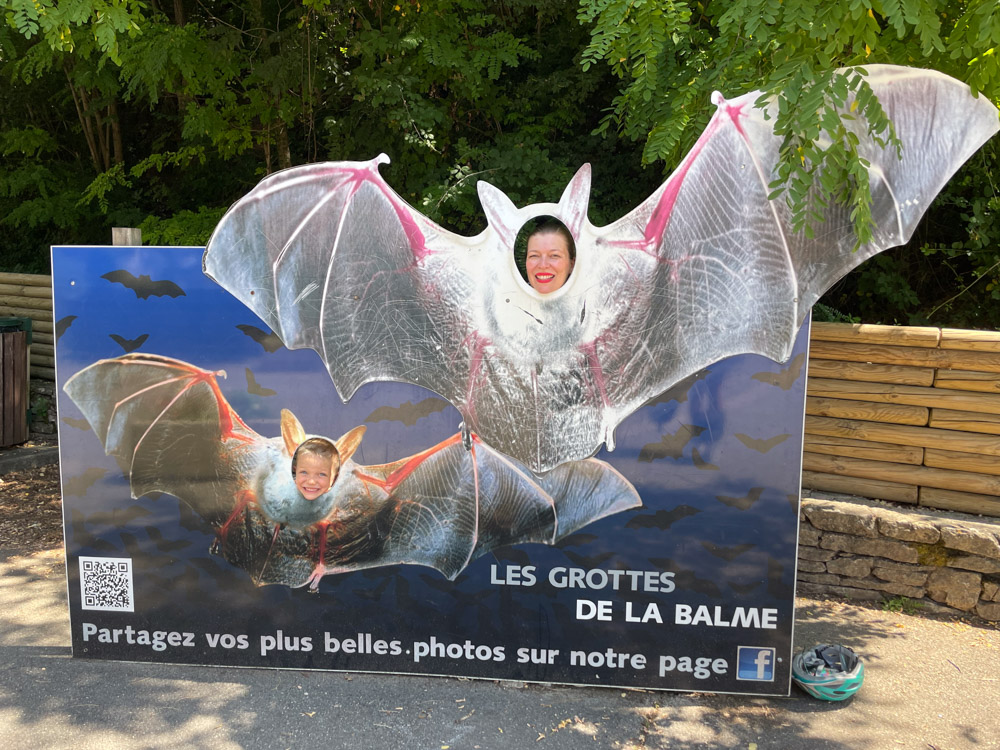
The Rock Labyrinths of the Caves of La Balme
Inside the Caves of La Balme, you’ll find two different rock labyrinths that offer a fun and adventurous experience for visitors of all ages. Twisting and narrow in places, the passageways are so tight that even fit adults may struggle to squeeze through some of them.
If you’re carrying a bulky backpack, it’s a good idea to leave it at the entrance to avoid getting stuck mid-way. This part of the cave visit is especially exciting for children, who love the thrill of getting “lost” and discovering hidden passages within the rocks.
The best part? It’s actually impossible to get truly lost. The labyrinths are cleverly designed as one-way routes, clearly marked to guide you through safely. In the section known as King Francis I’s Labyrinth, there’s even a shortcut that leads directly to the next point of interest, ideal if you want to skip the winding route or are short on time.

Mandrin’s Labyrinth: Smugglers, Legends and Hidden Treasure
The most famous rock labyrinth inside the Caves of La Balme is undoubtedly Mandrin’s Labyrinth, named after the legendary smuggler Louis Mandrin. This 18th-century outlaw used the caves as a hideout to escape justice. Executed at just 30 years old in 1755 in the nearby city of Valence, Mandrin quickly became a folk hero, often seen as the French Robin Hood.
Today, his labyrinth captures the imagination of young visitors who enjoy winding their way through the narrow, twisting rock passages. Along the way, they can uncover snippets of Mandrin’s story and, of course, search for the hidden treasure said to be waiting at the end of the trail.
King Francis I’s Labyrinth: Royal Feasts and Mysterious Creatures
The second labyrinth inside the Caves of La Balme is named after King Francis I of France. According to legend, he once dined inside the chamber that now bears his name. His visit dates back to 1516, shortly after the Battle of Marignano, when he stopped at the caves’ chapel accompanied by his mother, Louise of Savoy.
Driven by a thirst for glory and a keen interest in geology, the young monarch wished to uncover the secrets of the caves. He sent two condemned prisoners into the depths, promising them a royal pardon if they returned. Although the men survived and mapped part of the underground passages, the expedition concluded with the ominous claim that the caves were home to monstrous abyssal creatures.
The king’s subterranean adventure was later commemorated in an 1882 fresco by the Lyonnais painter Théodore Levigne. Working by candlelight, Levigne completed the painting of King Francis I in just six hours. It’s a remarkable feat that continues to add to the legend of La Balme’s royal visitor.
The Underground Lake: A Hidden World Beneath the Surface
Among the many natural wonders inside the Caves of La Balme, the underground lakes and stalactites are particularly captivating. The largest lake stretches for an impressive 180 metres and is fed by a natural siphon that extends at least 3 kilometres beneath the surface.
A siphon is a U-shaped underground passage permanently filled with water. While fascinating, it’s also extremely dangerous, as divers can easily become trapped with no way to resurface. This very risk became tragically real at La Balme, where a diver lost their life exploring the lake’s depths. A plaque commemorates this sad event.
Despite its mystery, the lake is home to a tiny crustacean resembling a shrimp, an elusive resident of the subterranean waters. Elsewhere in the cave, you’ll come across smaller pools and water basins, each with its own ethereal charm, reflecting the otherworldly beauty of this underground realm.
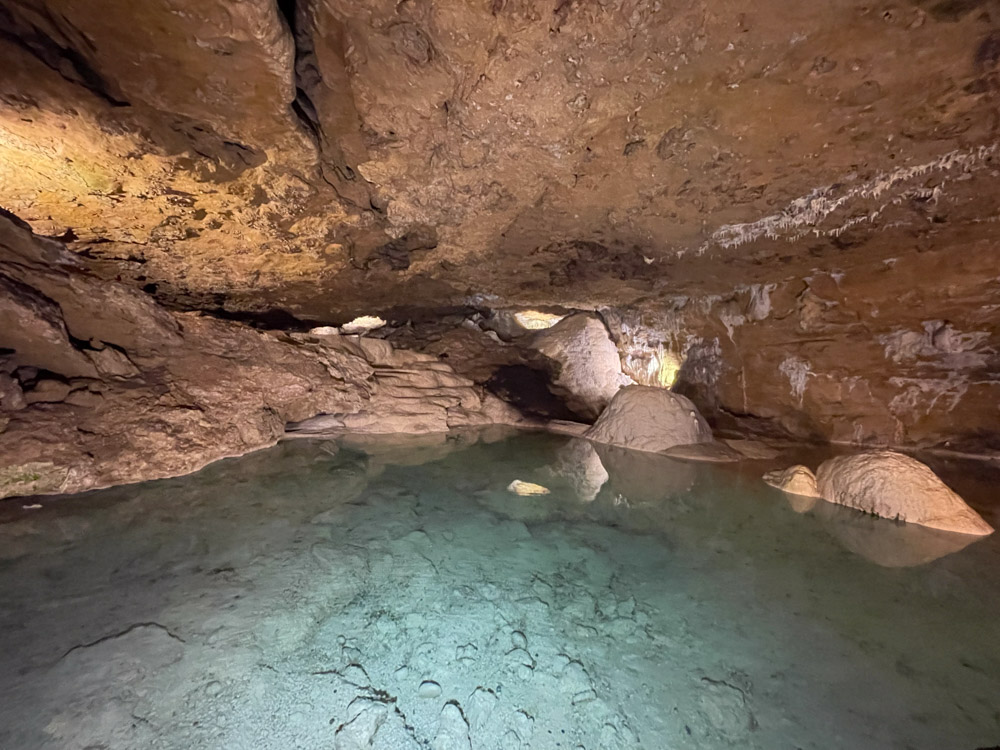
The Stalactites
The tallest chamber in the Caves of La Balme, the Grande Coupole, or Great Dome, soars to 40 metres and offers the best vantage point to admire the stunning stalactites. These natural formations hang from the cave ceilings. The word “stalactite” comes from the Greek σταλακτίτης (stalaktítis), meaning “dripping.”
Stalactites form through a fascinating process: rainwater seeps through cracks in the limestone rock, dissolving calcium carbonate along the way. When this mineral-rich water reaches the cave ceiling, it deposits tiny crystals drop by drop, gradually creating these iconic hanging structures.
These formations grow incredibly slowly over time, provided they remain untouched. That’s why it’s essential to be careful when exploring caves, to preserve these delicate natural wonders for generations to come.
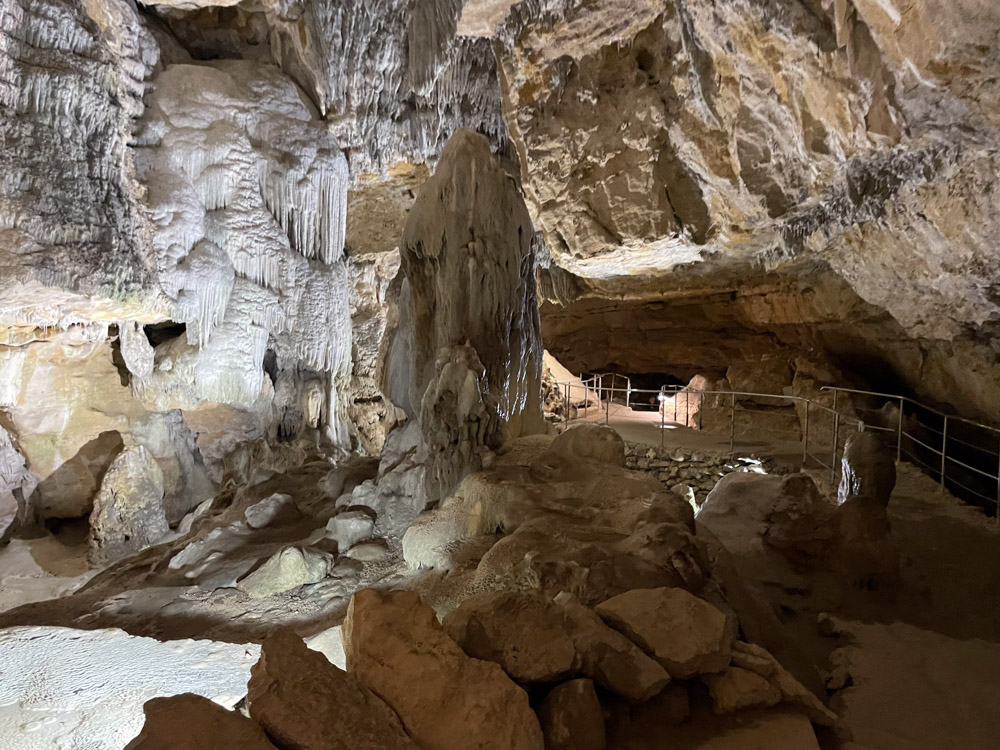
The Chapels
At the entrance to the Caves of La Balme, you’ll immediately notice a striking structure built into the rock, housing two chapels nestled within the cliff face.
The first chapel is located at the base of the caves and dates back to the 9th century. It was constructed on the ruins of an ancient Roman site and is dedicated to Saint John the Baptist. Inside, you’ll find a small statue of the saint. This lower chapel can be a little tricky to spot at first, as it’s partially concealed by the surrounding rock walls.
The second chapel, more prominently visible above, was built in 1310 directly on top of the first. It’s dedicated to Our Lady of Consolation, the Virgin Mary. While it may not offer major tourist attractions inside, it features some of the oldest architectural details in the Isle Crémieu region. The interior wall paintings date from 1896. The bell tower rises close to the vault of the cave entrance, around 35 metres above the ground.
The main reason to climb the stairs to this upper chapel is the panoramic view it offers over the caves and the surrounding landscape. In addition, the chapel’s walls seamlessly blend into the cave’s natural rock. This astonishing sight will leave you in awe.
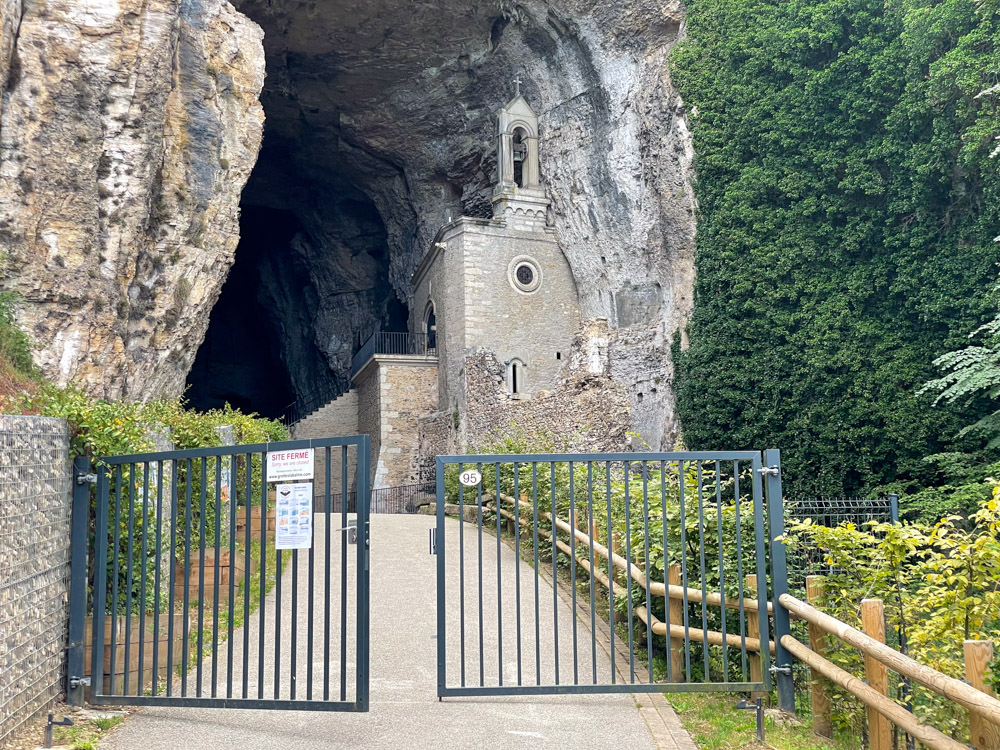
Practical Information for Visiting the Caves of La Balme
If you’re planning a visit to the Caves of La Balme, there are a few important guidelines to keep in mind. To protect the environment and avoid disturbing the resident bat colonies, animals are not allowed inside the caves. Photography is permitted, but only without flash or tripods.
Due to the natural layout of the caves, the site is not accessible for pushchairs or wheelchairs. If you’re travelling with very young children or visitors with reduced mobility, this is worth considering.
That said, the route through the caves is entirely manageable for children aged three and up, provided they’re used to walking on their own. The terrain can be uneven, with narrow passages that require a certain degree of independence and agility to navigate safely.
What to Wear When Visiting the Caves of La Balme
To explore the Caves of La Balme safely, it’s essential to wear closed-toe shoes, as some areas of the cave can be narrow, uneven, or slippery.
The caves are cool and damp throughout the year, with an average temperature between 12 and 15 degrees Celsius. When we visited in summer, it was likely a bit warmer. We wore t-shirts and shorts, donning a sweatshirt in a few of the colder chambers.
That said, bringing a light jacket or jumper is a good idea, especially if you’re sensitive to the cold. Even if the weather outside is mild, the temperature underground may feel noticeably cooler. Keep in mind that perceived temperature can vary from person to person. What felt fine for me might feel chilly to you.
Lastly, make sure to wear comfortable clothing, as you’ll be navigating narrow, winding passages and rock labyrinths during your visit.
Opening Hours and Ticket Prices for the Caves of La Balme
Ticket prices for the Caves of La Balme vary depending on the season. During the low season, from February to July and from September to January, entry costs are €9 for adults, €8 for teens, and €7 for children aged 4 to 11. The caves are open Wednesday to Friday from 1:30 pm to 5:00 pm, and on weekends and public holidays from 10:30 am to 5:00 pm.
During the high season, from July to September, ticket prices are €11 for adults, €9 for teens, and €8 for children. The caves are open daily from 10:30 am to 5:30 pm.
How to Get to the Caves of La Balme
The Caves of La Balme are located in the village of La Balme-les-Grottes, in the Isère region of France, just a 40-minute drive from Lyon. They offer a unique and fascinating experience that’s well worth including in any trip to this part of the country.
The road leading to the Caves of La Balme is wide and easy to drive. There is a large car park nearby that is available for visitors. We travelled to La Balme-les-Grottes in a motorhome and had no trouble reaching the site, despite the size of our vehicle.
During our visit, in early summer but still within the low season, we were lucky enough to find very few people around. The car park was almost empty, with only two other cars and a local bus alongside us.
Les Grottes de La Balme (Caves of La Balme)
Rue des Grottes, 38390 La Balme-les-Grottes
Where to Stay Near the Caves of La Balme
If you’re planning to stay overnight near the Caves of La Balme, a convenient option is the Camping du Domain Beauséjour, which is open all year round. In addition to pitches for caravans and motorhomes, the campsite also offers chalets, mobile homes, lodge tents, and static caravans for regular holidaymakers.
Keep in mind that the on-site swimming pool and bar are only open from 15 June to 15 September, so plan accordingly if you’re hoping to take advantage of those facilities during your stay.
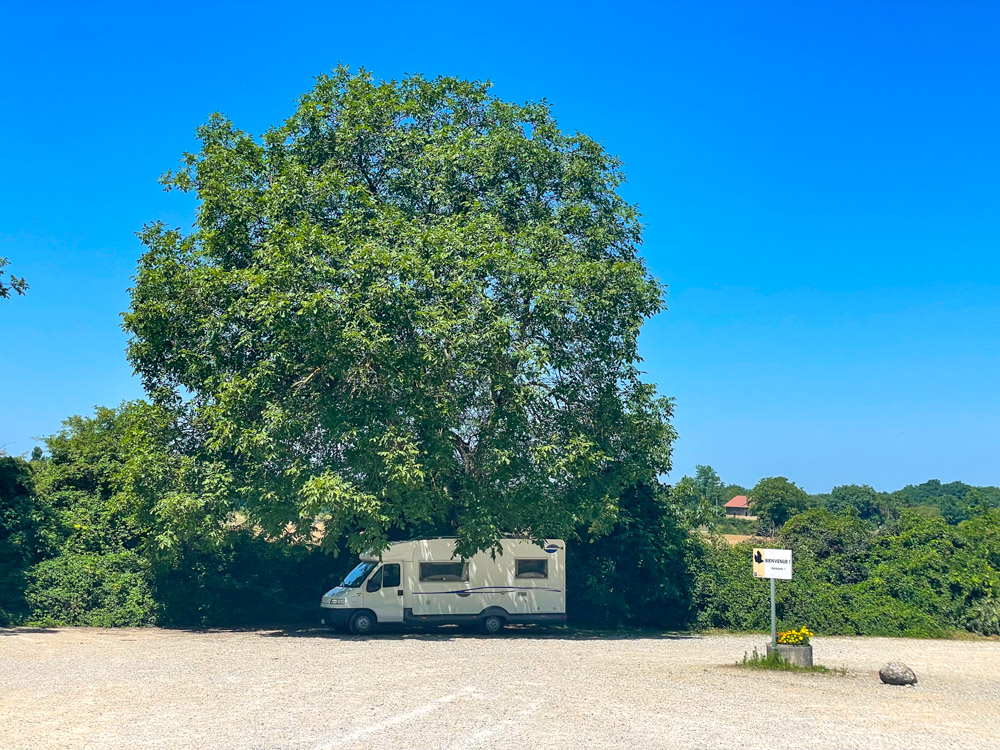
The Caves of La Balme are a must-see attraction for families with children and nature lovers alike. Located just 40 minutes from Lyon, they offer an unforgettable underground adventure. During your visit, you can explore breathtaking rock formations and immerse yourself in the natural beauty of this unique subterranean world.
Let me know if you had heard of the Caves of La Balme before, or if my article has inspired you to add them to your travel list. Feel free to leave a comment, I’d love to hear from you!

2 comments
Hello Paola
I’m Korean
Yesterday ride your car
Very thank you
Thank you for message me here! It was a pleasure to meet you. Hope you have an amazing trip